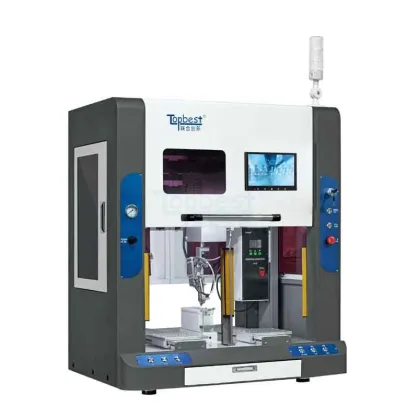The Future of Electronics Manufacturing: The Soldering Robot
The field of electronics manufacturing is witnessing a revolutionary transformation, thanks to the advent of soldering robots. These advanced machines have brought precision, efficiency, and innovation to soldering processes, helping manufacturers meet the ever-increasing demands of the industry. In this article, we will explore the capabilities of soldering robots, their applications, and the impact they have on electronics manufacturing.
The Rise of Soldering Robots
Soldering is a critical step in electronics manufacturing, where components are securely connected to a PCB (Printed Circuit Board) using a molten solder alloy. Traditionally, this task has been performed by human operators, which comes with inherent challenges, such as variations in skill level, fatigue, and the risk of defects. Soldering robots were developed to address these challenges and elevate the soldering process to new levels of precision and efficiency.
Precision and Consistency
One of the primary advantages of using soldering robots is their unmatched precision and consistency. These machines are programmed to execute soldering tasks with pinpoint accuracy, ensuring that each joint meets the strictest quality standards. Unlike human operators, soldering robots do not suffer from fatigue, making them ideal for high-volume production. The result is a significant reduction in defects and rework, leading to a more consistent and reliable end product.

Versatility
Benchtop Soldering robots are incredibly versatile and adaptable to various soldering applications. They can handle a wide range of soldering tasks, including through-hole components, surface mount devices, and fine-pitch connections. Their flexibility allows them to accommodate different solder alloys, flux types, and soldering profiles, making them suitable for various electronic components and assemblies. This versatility is a key feature that makes soldering robots invaluable in electronics manufacturing.
Efficiency and Speed
Soldering robots are designed to work tirelessly, 24/7, without breaks or downtime. This translates to a significant increase in production efficiency and speed. By automating soldering tasks, these robots reduce cycle times, increase output, and help manufacturers meet growing demands. The improved efficiency ultimately leads to a shorter time-to-market for electronic products, giving manufacturers a competitive edge.
Cost Savings
While the initial investment in soldering robots may appear substantial, the long-term cost savings are significant. These machines can perform soldering tasks with minimal waste, using precise amounts of solder and generating fewer defects. This results in reduced material costs and less need for rework or repairs. Moreover, by automating soldering, manufacturers can reallocate human labor to other value-added tasks within the manufacturing process, further optimizing their workforce.
Quality Assurance
Soldering robots not only ensure precision and consistency but also contribute to enhanced quality assurance. Equipped with advanced sensors and vision systems, these robots can monitor and inspect solder joints in real-time. This real-time quality control helps detect and rectify defects immediately, reducing the likelihood of defective products reaching the end of the assembly line. The result is higher customer satisfaction and lower warranty costs.
Worker Safety
Soldering robots system enhance worker safety in the manufacturing environment. Soldering can involve exposure to fumes, hazardous chemicals, and high-temperature conditions, which can pose risks to human operators. By automating this process, manufacturers reduce the risks associated with manual soldering, protecting their employees from potential health hazards. This not only ensures a safer working environment but also contributes to a more motivated and content workforce.
Conclusion
Soldering robots are ushering in a new era in electronics manufacturing, where precision, consistency, efficiency, cost savings, quality assurance, versatility, and improved worker safety are paramount. As the electronics industry continues to evolve, embracing soldering robots is a strategic move that helps manufacturers stay competitive, meet customer expectations, and deliver high-quality products. These machines are redefining the soldering process and are set to play a crucial role in the future of electronics manufacturing. If you aim to optimize your manufacturing line, consider the transformative power of soldering robots.
121
0
0

Comments
All Comments (0)